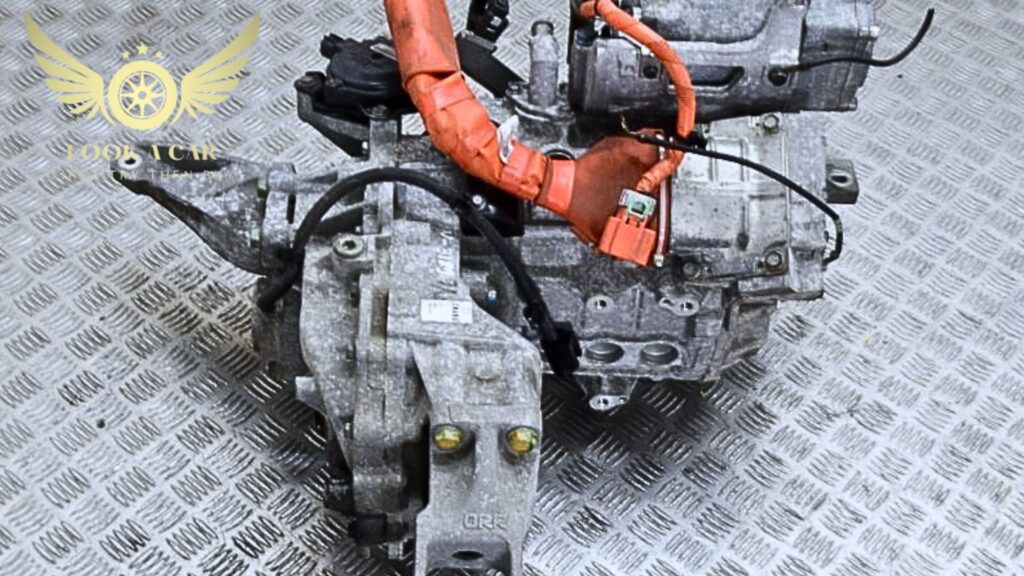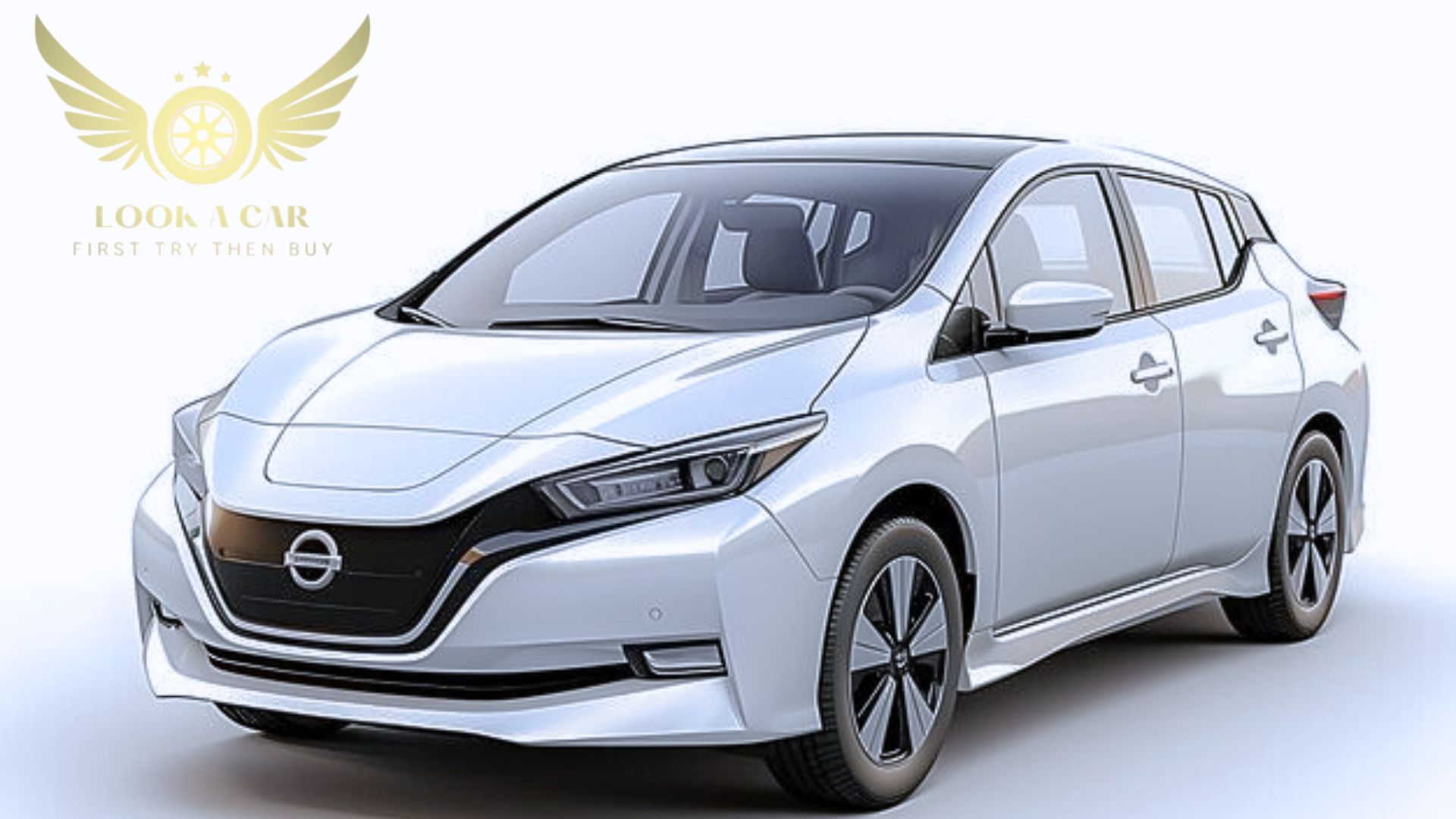Overview
The Nissan Leaf is one of the oldest electric cars on the market, but it can still be a good choice for some people. It’s one of the most affordable electric vehicles (EVs), with a starting price under $30,000. However, its driving range is limited. The Leaf S can drive up to 149 miles on a full charge, while the more expensive SV Plus goes up to 212 miles. Both options have shorter ranges compared to competitors like the Hyundai Ioniq 6 and Tesla Model 3. Also, the Leaf’s 50-kW DC fast-charging speed is slower than others. In a test where we drove the car at 75 mph on the highway, we only got about 180 miles on a single charge.
That said, the Leaf can still be a smart choice as a second car, especially if you mostly drive it locally and can charge it every night. Its hatchback design also offers good storage space for its price. There are rumors that the current Leaf will soon be discontinued. However, Nissan has confirmed that a redesigned Leaf is coming, though they haven’t said when. If you’re thinking about getting a Nissan Leaf, it’s worth going for the 2024 model if it’s still available. It’s the same as the 2023 model but is eligible for a $3,750 federal EV tax credit, which it won’t have in 2025.
Suggestion: Pricing and Which One to Buy
The price of the 2025 Nissan Leaf starts at $29,280 and goes up to $37,330, depending on the model and features.
- S: $29,280
- SV Plus: $37,330
The SV Plus is the best choice because it offers the longest driving range, a stronger electric motor, and a good set of standard features for a reasonable price. It comes with an 8.0-inch touchscreen that supports Apple CarPlay and Android Auto, automatic climate control, keyless entry with push-button start, and automatic headlights.
EV Motor, Power, and Performance
The Nissan Leaf is a front-wheel-drive car. The standard Leaf S has a 147-horsepower electric motor and a 40.0-kWh battery, which are considered small by today’s standards. The Leaf SV Plus is more powerful, with a 214-horsepower electric motor and a larger 62.0-kWh battery.
The Leaf also has an e-Pedal feature, which lets the driver switch between two braking modes. One mode lets the car coast when you take your foot off the accelerator, while the other slows the car down and uses that energy to help recharge the battery.
Exterior
The Nissan Leaf has a sleek and modern design, with smooth lines that give it a clean look. Its compact size makes it easy to drive in the city, and the large windows provide good visibility for the driver. The front of the Leaf features a signature V-shaped grille, which is common in Nissan vehicles, and the headlights are slim and sharp, adding a touch of style. The rear of the car has a unique design with large taillights that stand out, giving it a distinct appearance. The Leaf also comes with a hatchback, making it easy to load and unload cargo. Overall, its design is simple but functional, perfect for daily driving.

Here’s a simple table describing the exterior features of the Nissan Leaf:
| Feature | Description |
|---|---|
| Overall Design | Sleek, modern design with smooth lines for a clean look. |
| Size | Compact size, ideal for city driving and easy maneuverability. |
| Windows | Large windows that offer excellent visibility for the driver. |
| Front Grille | Signature V-shaped grille, common in Nissan vehicles. |
| Headlights | Slim, sharp headlights that add a stylish touch to the front. |
| Taillights | Large, distinctive taillights at the rear for a unique appearance. |
| Hatchback Design | Hatchback style for easy loading and unloading of cargo. |
| Body Shape | Aerodynamic shape designed to improve efficiency and reduce wind resistance. |
Interior, Comfort, and Cargo
The Nissan Leaf’s interior has a lot of black plastic, but the smooth and well-built design keeps it from looking cheap. The dashboard has a large analog speedometer and a 7.0-inch digital screen that can be adjusted to show different information. The seats in the Leaf are very comfortable, and the back seat has plenty of space for adults.
Even though the back seat doesn’t fold completely flat, the Leaf still has excellent cargo space for its class. We were able to fit seven carry-on suitcases behind the back seat and 19 with the back seat folded down. For comparison, the Chevy Bolt EV (which is no longer made) held five suitcases in the back and 16 when the seats were down. The Niro EV, which looks more like an SUV, held slightly more cargo, but the Leaf is still one of the best electric cars for storage.

Here’s a simple table describing the interior features of the Nissan Leaf:
| Feature | Description |
|---|---|
| Material | Mostly black plastic, but well-assembled with uniform textures to avoid a cheap feel. |
| Gauge Cluster | Large analog speedometer with a 7.0-inch digital display that can be customized. |
| Seats | Very comfortable, with plenty of space in both front and rear seats for adults. |
| Rear Seat Space | Spacious rear seat that offers good legroom for passengers. |
| Cargo Capacity | Impressive cargo space with 7 carry-on suitcases behind the rear seat and 19 when folded. |
| Back Seat Folding | Back seat doesn’t fold completely flat but still provides ample cargo space. |
| Infotainment | 8.0-inch touchscreen with Apple CarPlay and Android Auto (in SV Plus). |
| Comfort Features | Automatic climate control, keyless entry with push-button start, automatic headlights. |
Engine
The Nissan Leaf doesn’t have a traditional engine since it’s fully electric. Instead, it uses an electric motor powered by a battery. The base model, Leaf S, comes with a 147-horsepower motor and a 40.0-kWh battery, giving it enough power for everyday driving. The more powerful Leaf SV Plus has a 214-horsepower motor and a larger 62.0-kWh battery, which provides more speed and a longer driving range. Since it’s an electric vehicle, the Leaf runs quietly and smoothly, with no need for gas or oil changes, making it a cleaner and more efficient option.

Here’s a simple table describing the engine specifications of the Nissan Leaf:
| Feature | Description |
|---|---|
| Engine Type | Fully electric motor, no traditional gas engine. |
| Leaf S Motor | 147-horsepower electric motor with a 40.0-kWh battery. |
| Leaf SV Plus Motor | 214-horsepower electric motor with a larger 62.0-kWh battery. |
| Driving Range (S Model) | 149 miles on a full charge (Leaf S). |
| Driving Range (SV Plus) | 212 miles on a full charge (Leaf SV Plus). |
| Performance | Smooth and quiet driving experience due to electric power. |
| Efficiency | No need for gas, oil changes, or traditional maintenance. |
| e-Pedal Feature | Allows switching between coasting and regenerative braking to recharge the battery. |

